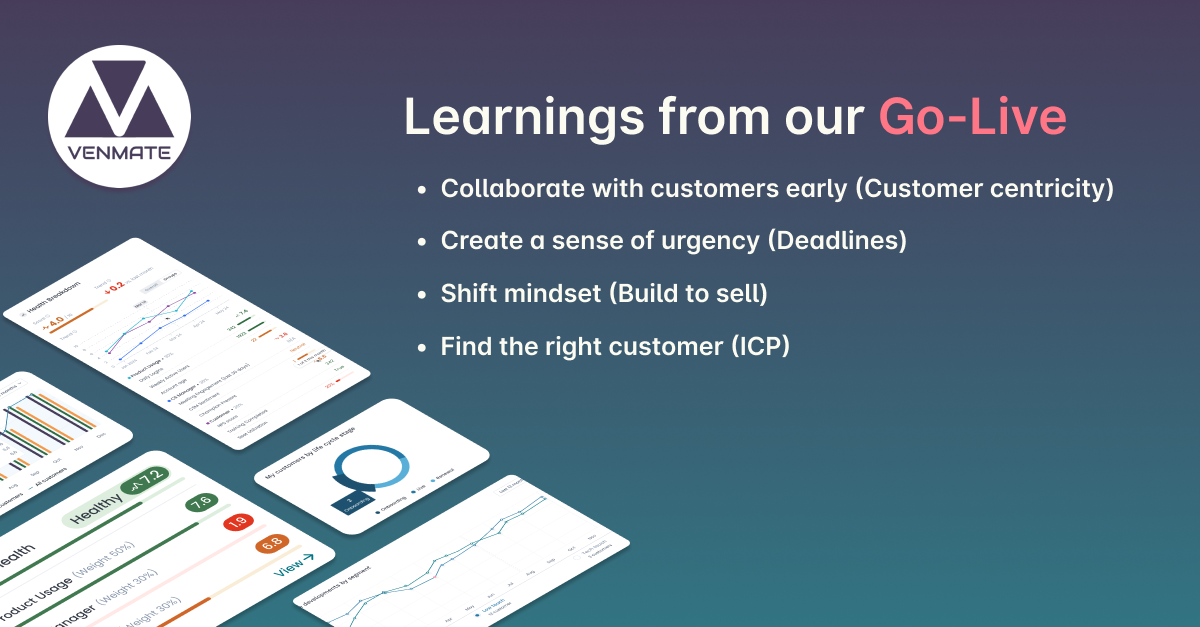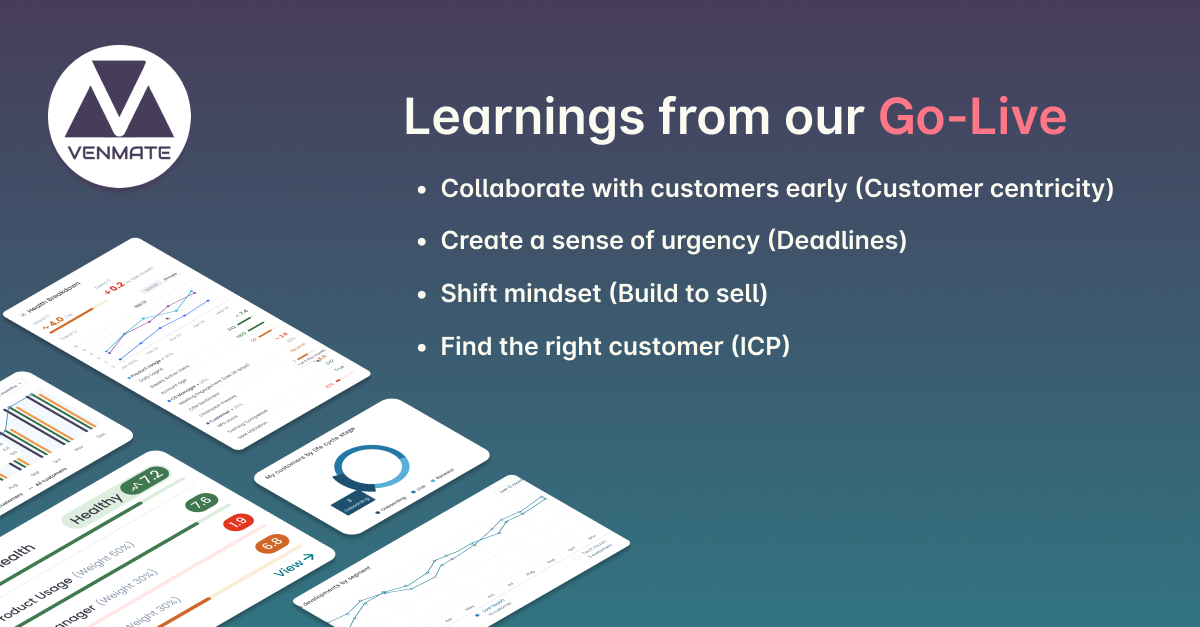Customer Feedback & Surveys
Introduction to customer feedback & surveys
Customer feedback is a vital component of a successful business strategy, offering invaluable insights that can drive product improvements, enhance customer satisfaction, and foster long-term relationships. In the context of Customer Success Management (CSM), gathering and utilizing customer feedback through surveys and other channels is essential for understanding how well the product or service is meeting customer needs. Moreover, establishing effective feedback loops allows companies to act on this feedback, ensuring continuous improvement and alignment with customer expectations.
Table of content
- Introduction to customer feedback & surveys
- The importance of customer feedback & surveys
- Types of customer feedback
- 1. Surveys
- 2. Direct feedback
- 3. Product usage data
- Creating effective feedback surveys
- Establishing feedback loops
- Leveraging feedback for strategic decisions
- Related topics
The importance of customer feedback & surveys
Customer feedback & surveys serves as a direct line of communication between the business (CSM Team) and its customers, providing unfiltered insights into their experiences, challenges, and expectations. Here’s why customer feedback is crucial:
- Understanding Customer Needs: Feedback helps businesses understand the evolving needs and pain points of their customers, which is critical for adapting products or services to better meet those needs.
- Enhancing Customer Satisfaction: By actively seeking and responding to feedback, businesses can address issues before they escalate, leading to higher customer satisfaction and loyalty.
- Driving Product Improvements: Customer feedback often highlights areas where the product or service can be improved, driving innovation and ensuring that the offering remains competitive in the market.
- Building Trust and Relationships: Regularly soliciting feedback and acting on it shows customers that their opinions are valued, which helps to build trust and strengthen the relationship.
Types of customer feedback
There are several ways to gather customer feedback, each providing different insights that can be used to enhance the customer experience.
1. Surveys
Surveys are one of the most common and effective methods for collecting feedback. They can be tailored to gather specific information on various aspects of the customer experience.
- NPS (Net Promoter Score): This widely used metric asks customers how likely they are to recommend the product or service to others. NPS scores provide a quick snapshot of customer satisfaction and loyalty.
- CSAT (Customer Satisfaction): CSAT surveys measure how satisfied customers are with a specific interaction or overall experience. These surveys typically use a scale (e.g., 1 to 5) to gauge satisfaction levels.
- CES (Customer Effort Score): CES surveys measure how much effort customers had to exert to get their issue resolved. This is particularly useful in assessing the efficiency of customer support and service interactions.
2. Direct feedback
Direct feedback is gathered through more personal interactions, such as customer interviews, focus groups, or even direct communication channels like email or phone calls. This type of feedback is often richer in detail and can provide deeper insights into customer thoughts and feelings.
3. Product usage data
While not traditional feedback, analyzing how customers interact with the product can provide insights into what features they value most, where they encounter difficulties, and how the product could be improved.
Creating effective feedback surveys
To maximize the value of customer feedback, it’s important to design surveys that are clear, concise, and targeted. Here are some best practices for creating effective feedback surveys:
- Define Clear Objectives: Before designing a survey, it’s essential to define what you want to achieve. Are you measuring customer satisfaction, product usability, or service quality? Clear objectives will guide the questions you ask and ensure that the feedback is actionable.
- Keep it Short and Simple: Customers are more likely to complete a survey if it’s short and easy to understand. Focus on asking only the most relevant questions that will provide the insights you need.
- Use a Mix of Question Types: Combine quantitative questions (e.g., rating scales) with qualitative questions (e.g., open-ended questions) to gather both measurable data and detailed insights.
- Personalize Where Possible: Personalized surveys, such as those tailored to a customer’s recent interaction or purchase, tend to yield more relevant and insightful responses.
- Timing is Key: Consider when to send your surveys. For example, sending a CSAT survey immediately after a support interaction or a CES survey after a customer completes a significant task can capture their experience while it’s fresh.
Establishing feedback loops
Collecting feedback is only the first step. To truly benefit from customer feedback, it’s essential to establish feedback loops—systems that ensure feedback is reviewed, acted upon, and communicated back to the customer. Here’s how to build an effective feedback loop:
- Collect: Continuously gather feedback through various channels, ensuring that you have a steady stream of data from different touchpoints in the customer journey.
- Analyze: Regularly review and analyze feedback to identify trends, recurring issues, and opportunities for improvement. Use tools like sentiment analysis to understand the overall tone of the feedback.
- Act: Prioritize feedback that requires action, whether it’s fixing a bug, improving a feature, or changing a process. Assign ownership to ensure that actions are taken promptly.
- Close the Loop: Communicate back to the customer what actions have been taken as a result of their feedback. This reinforces that their input is valued and can help improve customer satisfaction and loyalty.
- Monitor and Iterate: Feedback loops should be ongoing. Continuously monitor the effectiveness of changes and be prepared to iterate based on new feedback.
Leveraging feedback for strategic decisions
Customer feedback is not just for tactical improvements—it can also inform strategic decisions. Here’s how:
- Product Roadmap: Use feedback to guide the product development roadmap, prioritizing features and improvements that customers are asking for.
- Customer Success Strategies: Feedback can highlight areas where customers need more support, leading to the development of new customer success initiatives or resources.
- Market Positioning: Understanding customer sentiment can help refine market positioning, ensuring that messaging resonates with the target audience.
Related topics
Want to get in touch? Leave us a message.
If you want to learn more about VENMATE and customer success management, feel free to get in touch and request a demo.


